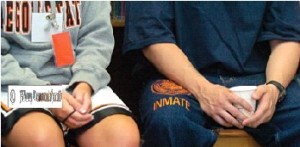 From President Obama’s address to America’s school children
From President Obama’s address to America’s school children
I get it. I know what it’s like. My father left my family when I was two years old, and I was raised by a single mom who had to work and who struggled at times to pay the bills and wasn’t always able to give us the things that other kids had. There were times when I missed having a father in my life. There were times when I was lonely and I felt like I didn’t fit in.
So I wasn’t always as focused as I should have been on school, and I did some things I’m not proud of, and I got in more trouble than I should have. And my life could have easily taken a turn for the worse.
But I was — I was lucky. I got a lot of second chances, and I had the opportunity to go to college and law school and follow my dreams…
Some of you might not have those advantages. Maybe you don’t have adults in your life who give you the support that you need. Maybe someone in your family has lost their job and there’s not enough money to go around. Maybe you live in a neighborhood where you don’t feel safe, or have friends who are pressuring you to do things you know aren’t right.
But at the end of the day, the circumstances of your life — what you look like, where you come from, how much money you have, what you’ve got going on at home — none of that is an excuse for neglecting your homework or having a bad attitude in school. That’s no excuse for talking back to your teacher, or cutting class, or dropping out of school. There is no excuse for not trying.
Where you are right now doesn’t have to determine where you’ll end up. No one’s written your destiny for you, because here in America, you write your own destiny. You make your own future….
(photo for Sara!)

 So,
So, 
 Here’s a short and, I think,
Here’s a short and, I think,  A recent
A recent  after a lengthy conversation with the dude handing out those nifty contexts guitar picks, i’ll break my blog silence by offering a quick update on how i spent my spring/summer non-vacation. the basic overview is represented in the title to this post, which i realize sounds something like a bad b-movie.
after a lengthy conversation with the dude handing out those nifty contexts guitar picks, i’ll break my blog silence by offering a quick update on how i spent my spring/summer non-vacation. the basic overview is represented in the title to this post, which i realize sounds something like a bad b-movie. A bartender learns a thing or two about conflict after three or four decades on the job. The
A bartender learns a thing or two about conflict after three or four decades on the job. The 